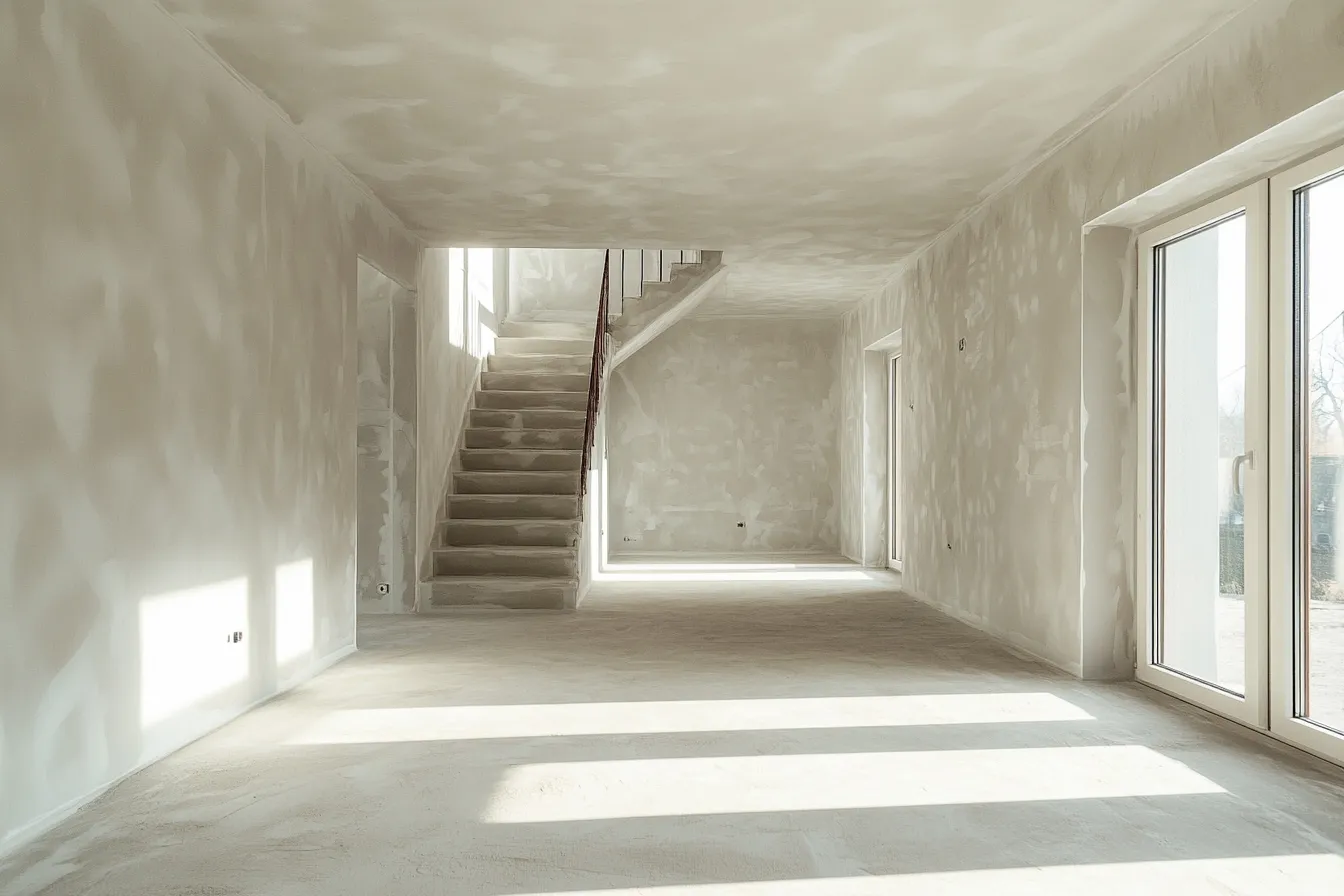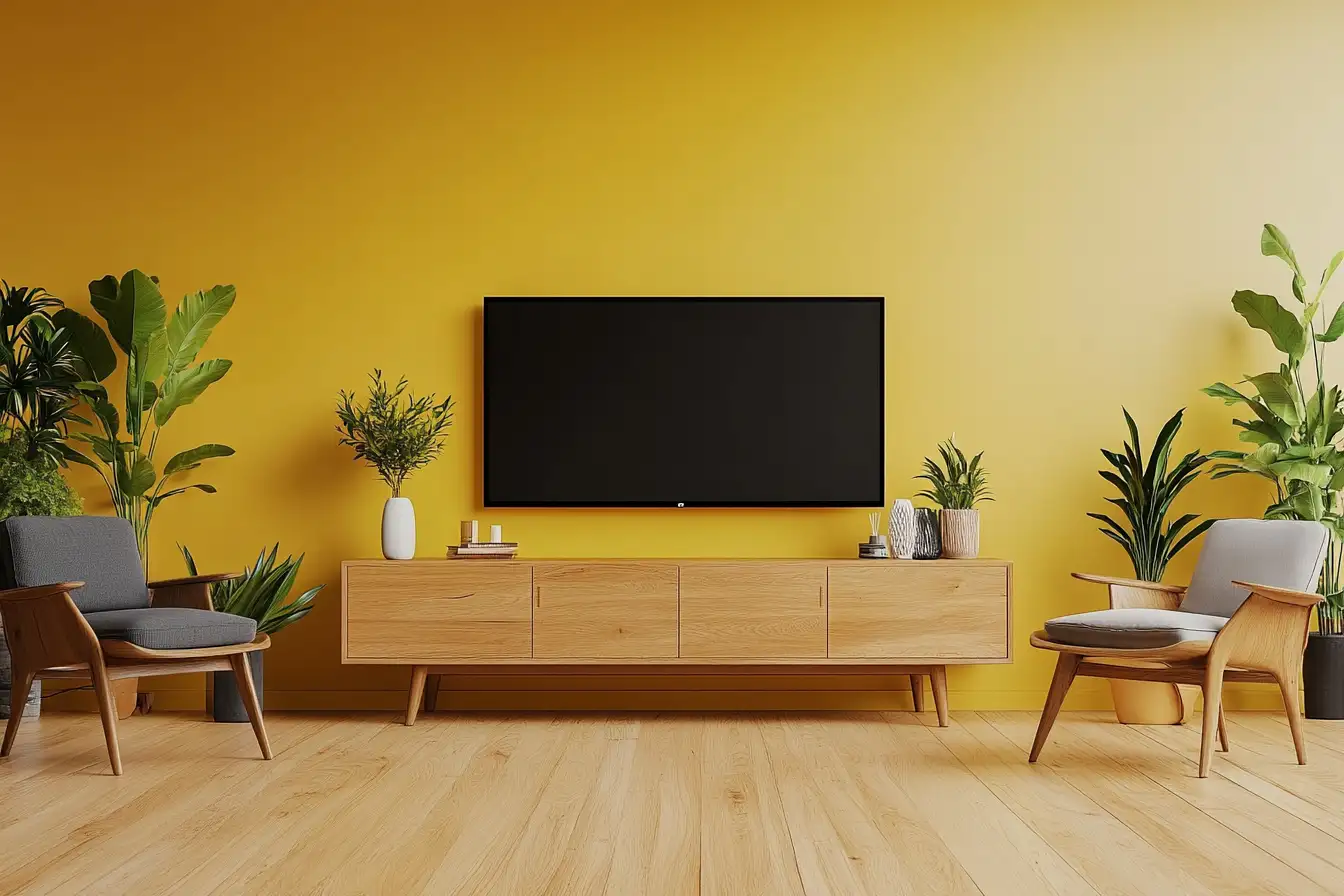Cost to Plaster a Room: Ultimate UK Cost Guide [2025]

We may earn a commission on sales through links at no extra cost for you.
Thinking about getting a room plastered? As a homeowner who’s recently gone through this process, I know firsthand how tricky it can be to figure out the costs. In this guide, I’ll walk you through everything you need to know about the cost to plaster a room in the UK, from materials to labor and those sneaky extra expenses that can catch you off guard. Plus, I’ll share some money-saving tips with you I picked up along the way!
Key Takeaways
- The average cost to plaster a room in the UK ranges from £500 to £1,000
- Labor costs for plastering typically fall between £150 and £400 per day
- Factors affecting price include room size, wall condition, and location
- Most plasterers can finish an average-sized room in 1-2 days.
What Affects the Cost of Plastering a Room?
From my experience and research, several factors influence the overall cost of plastering a room:
- Room size: Larger rooms require more materials and labour, increasing costs.
- Wall condition: Walls in poor condition may need extra preparation, adding to the price.
- Type of plastering: Skimming over existing plaster is usually cheaper than applying new plaster to bare walls.
- Ceiling plastering: Including the ceiling will increase the overall cost.
- Location: Labour rates vary across the UK, with London and the South East generally being pricier.
- Accessibility: Difficult-to-reach areas or upper floors may incur additional charges.
- Removal of old plaster: If required, this adds to both labour time and disposal costs.
🫰 Breakdown: What does it Cost to Plaster a Room in the UK?
The cost to plaster a room in the UK can vary widely based on several factors I mentioned above. On average, you can expect to pay between £40 and £60 per m² all included. Here is an overview for typical room sizes:
| Room Size | Total Cost |
|---|---|
| Small (10m²) | £400 - £600 |
| Medium (20m²) | £800 - £1,200 |
| Large (30m²) | £1,200 - £1,800 |
Example: Cost to Plaster a 20m² Room near London
Here’s a more detailed example to show you the cost of plastering a room of 20m² near London:
| Overview | Cost |
|---|---|
| Materials (plaster, scrim tape, PVA) | £350 |
| Labor (2 days at £300/day) | £600 |
| Waste removal | £80 |
| Additional prep work | £80 |
| Total | £1,110 |
✨ Types of Plastering and Their Costs
Different plastering jobs come with varying price tags. Here’s an overview to different plastering methods and their average prices per square metre:
- Skimming: £15 – £30 per m²
- Applying a thin layer of plaster over existing surfaces
- Ideal for refreshing walls in good condition
- Applying new plasterboard: £25 – £50 per m²
- Involves fixing plasterboard and then skimming
- Necessary for severely damaged walls or new partitions
- Wet plastering: £30 – £60 per m²
- Traditional method using sand and cement base coat
- Provides a durable finish but takes longer to dry
- Ceiling plastering: £35 – £70 per m²
- More challenging due to overhead work
- Often priced higher than wall plastering
- Lime plastering: £40 – £80 per m²
- Used in older properties or for eco-friendly builds
- Requires specialist skills and materials
For my bedroom, I opted for skimming over the existing plaster, which was a cost-effective way to achieve a smooth finish.
Labor Costs for Plastering
Most plasterers charge a daily rate, which typically falls between £200 and £400. Some may offer a fixed price for the entire job. Here’s a rough guide to labour costs:
- Skimming over existing plaster: £150 – £300 per day
- Applying new plaster to bare walls: £200 – £400 per day
- Plastering ceilings: Additional £150 – £300 per day
Additional Costs to Consider
When budgeting for your room plastering, don’t forget these potential extra expenses:
- Wall preparation: £50 – £200 per room
- Removing old wallpaper: £150 – £300 per room
- Repairing significant damage: £50 – £150 per patch
- Coving installation: £10 – £20 per metre
- Painting after plastering: £250 – £750 per average sized room
- Replastering window reveals: £50 – £100 per window
- Plastering around new electrical sockets: £20 – £30 per socket
- Applying corner beads: £5 – £10 per metre
In my case, I needed some old wallpaper removed, which added about £200 to the total cost.

What is the Difference Between Plastering and Skimming Walls?
Plastering and skimming are two different techniques for finishing walls:
Plastering:
- Applies multiple layers of plaster to bare walls or badly damaged surfaces
- More time-consuming and expensive
- Provides a durable, long-lasting finish
Skimming:
- Applies a thin layer of finishing plaster over existing surfaces
- Quicker and cheaper than full plastering
- Ideal for refreshing walls with minor imperfections
I found that skimming was sufficient for some of my walls, which helped keep costs down.
The Plastering Process: Step by Step
To help you understand what’s involved, here’s an overview of the typical plastering process:
- Room preparation: Clear furniture and cover floors
- Wall inspection: Check for any issues that need addressing
- Wall preparation: Clean, repair damages, and apply PVA if necessary
- Mixing plaster: Prepare the plaster to the right consistency
- Applying plaster: Apply evenly in layers
- Finishing: Smooth and level the surface
- Cleanup: Remove debris and clean the area
When I had my room plastered, the professionals completed the job in about two days.
🕒 How Long Does It Take to Plaster a Room?
Professional plasterers typically take 1-2 days to plaster an average room (20m²).
- Small room (up to 10m²): Usually 1 day
- Medium room (10-20m²): Typically 1-2 days
- Large room (20-30m²): Often 2-3 days
Factors affecting time include room size, wall condition, and the type of plastering required.
DIY vs Professional Plastering: A Cost Comparison
While DIY plastering can save money, it’s important to consider the pros and cons:
DIY Costs:
- Materials: £150 – £300 for an average room
- Tools (if buying): £100 – £300
- Your time: 3-5 days for an inexperienced DIYer
- Potential for mistakes requiring professional correction
Professional Costs:
- All-inclusive service: £500 – £1,000 for an average room
- Time saved: Typically completed in 1-2 days
- Professional finish and often includes warranties
In my experience, unless you’re confident in your DIY skills, professional plastering often provides better value in terms of time saved and quality of finish.
How to Find the Right Plasterer
Finding a reliable plasterer is crucial for getting a good result. Here’s how I approached it:
- Check credentials: Look for membership in trade associations like the Federation of Master Builders
- Read reviews: Check online reviews like on Google Maps and ask for references from previous clients
- Get detailed quotes: Insist on written quotes that break down all costs to avoid surprises
- Ask about experience: Enquire about their history with your type of project
- Verify insurance: Ensure they have proper liability insurance
- Clear communication: They should be able to explain their process and answer your questions clearly
I found that taking the time to find the right plasterer made the experience much more pleasant and helped me to save money.

💷 7 Tips to Reduce Your Room Plastering Costs
As someone who loves a good deal, here are my top tips for saving on your room plastering:
- Compare quotes: Get at least three quotes from reputable plasterers
- Prepare the room yourself: Clear furniture and remove old wallpaper to reduce labour costs
- Consider skimming: If your walls are in good condition, skimming over existing plaster can be cheaper than full re-plastering
- Time your project: Some plasterers offer discounts during slower seasons
- Bundle services: If you need multiple rooms done, you may get a discount on the overall project
- Provide materials: Sometimes, buying materials yourself can be cheaper than the plasterer’s markup
- Tackle small repairs yourself: Fix minor cracks or holes before the plasterer arrives
🌿 Environmental Considerations and Costs
Eco-friendly plastering options are gaining popularity. While they may have higher upfront costs, they often provide long-term benefits:
- Clay plaster: Natural and biodegradable, but more expensive
- Lime plaster: Breathable and suitable for older buildings
- Recycled aggregates: Some plasters now incorporate recycled materials
While these options might cost 10-20% more upfront, they can offer long-term benefits in terms of indoor air quality and sustainability.
FAQs
Q: How much does it cost to plaster a ceiling? A: Plastering a ceiling typically costs between £350 and £700 for an average-sized room. The price can vary depending on the ceiling’s condition and accessibility.
Q: Can I plaster over wallpaper? A: It’s not recommended. Wallpaper should be removed before plastering to ensure a smooth, long-lasting finish. Plastering over wallpaper can lead to bubbling and peeling.
Q: How soon can I paint after plastering? A: It’s best to wait at least 4-6 weeks for the plaster to fully dry before painting. In my experience, rushing this process can lead to paint problems down the line.
Q: Do I need to move my furniture before the plasterers arrive? A: Ideally, yes. While many plasterers offer furniture moving services, clearing the room yourself can save time and money.
Q: How long does plaster take to dry? A: Plaster typically takes 2-3 days to dry to the touch, but it can take up to 4 weeks to dry completely. Factors like humidity and temperature can affect drying time.
Q: How do I know if my walls need replastering or just skimming? A: If your walls have minor imperfections or old paint, skimming might be sufficient. For walls with significant damage, crumbling plaster, or bare brickwork, full plastering is usually necessary.
Q: Will plastering fix cracks in my walls? A: Plastering can cover minor cracks, but significant structural issues should be addressed before plastering.
Q: Can plastering fix damp walls? A: Plastering alone won’t fix damp issues. The underlying cause of dampness must be addressed before plastering. A damp specialist can help identify and resolve these problems.
Conclusion
In my opinion, plastering a room can definitely improve its appearance and is a worthwhile investment in your home. While room plastering costs can add up, understanding what influences the price and how to save money can help you a lot to make the right decisions.
Remember, the cheapest quote isn’t always the best value. Consider the plasterer’s experience, the quality of materials used, and the long-term benefits of a well-plastered room. And don’t hesitate to get multiple quotes to ensure you’re getting the best value for your money.
Frank is a journalist and home improvement enthusiast who recently bought and renovated his own house. After several challenges and discovering how tricky it can be to find reliable cost information, he decided to share his experiences through practical cost guides.